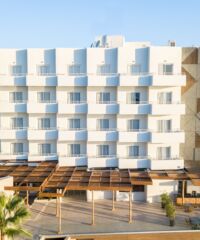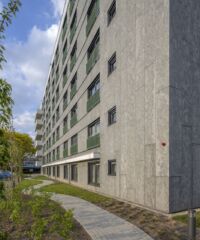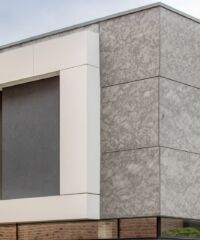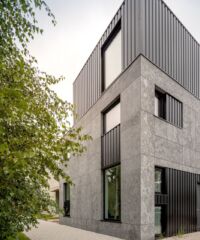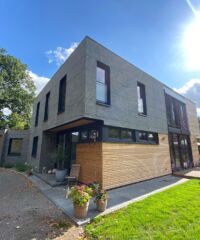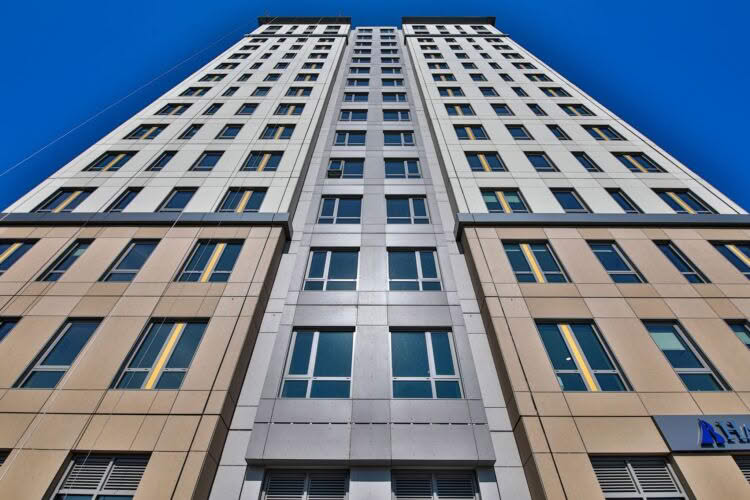
Fire-safe façade cladding: SVK façade panels
Fire safety occupies an increasingly important place in building design. Rightly so, because the recent past has taught us that the consequences in case of fire can be dramatic. Moreover, our available building space is becoming increasingly cramped. As a result, more and more buildings are being built in height and buildings are coming closer together. As an architect, it is therefore important to take this into account as early as the design phase. Thanks to their standard fire reaction class A2-s1, d0, SVK fibre cement wall cladding panels meet the most stringent fire safety requirements. Our wall materials also comply with the European standard EN 13501-1.
Fire reaction versus fire resistance
To understand the fire reaction class, it is important to understand the difference between fire reaction and fire resistance. Fire reaction means that in the event of a fire, the first thing to do is to slow down its development and prevent the rapid spread of flames. This is at the level of the product itself. The fire reaction can be influenced by using building materials that are difficult to ignite or low flammability. Compare it to a burning wad of paper in an empty metal dustbin or that same burning wad in a full paper basket. Therefore, it is important to test the fire reaction of products that may be near a fire.
Fire resistance, on the other hand, is considered when the fire is fully developed, however. The aim is to prevent expansion and spread along or through the building and to ensure the stability of the building for a certain period of time. For this purpose, the fire resistance of the building elements is tested. Fire resistance says something about how long a building element retains its function (including stability) in the event of fire.
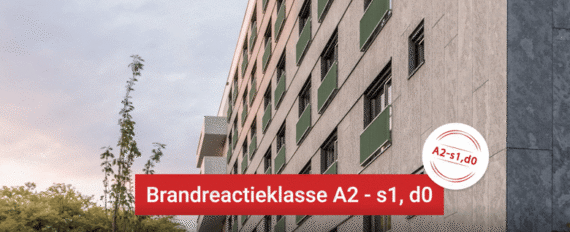
Fire reaction class A2-s1, d0
All SVK fibre cement products belong to fire reaction class A2-s1, d0 according to European standard EN 13501-1.
- Class A1 and A2 are assigned if the materials make only a very limited contribution to the fire under the most severe conditions.
- s1 means that there is only limited smoke development
- d0 stands for no burning droplets
SVK cladding panels are therefore virtually non-combustible and hardly contribute to the development or continuation of fire. This is because fibre cement consists mainly of cement, supplemented by a small percentage of fibres and fillers. The result of the large proportion of cement ensures that our materials have such favourable reaction to fire.
The new fire legislation in practice
The new fire legislation imposes specific requirements on buildings according to height namely:
- low buildings (height < 10 m)
- medium buildings (10 m ≤ height ≤ 25 m)
- high buildings (height > 25 m)
Looking at the requirements for external cladding, we see that for the most stringent requirement (high buildings), these must have at least a fire reaction class of A2-s3, d0. All our fibre cement products comply with this, making SVK cladding panels the strongest link. It is important for the total façade design that all the essential components used (support structure, rear construction, insulation materials, thermal breaks, sealants, vapour barriers, tapes, etc.) must comply with the requirements set out in the legislation.
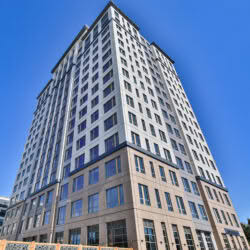
How can SVK help you with your project?
On the one hand, we offer you a fire-safe product that more than meets the strictest standards. In addition, our experts are always ready to review the design details with you and give advice where necessary.
Talk to an expert
Do you have any specific questions for which you can't find the answer straightaway? You can always contact our technical team, with no obligation. They will be delighted to help you with advice on our product specifications, installation and use of colours.
Realisations — get inspired
